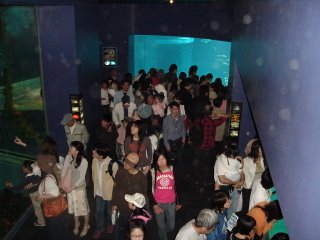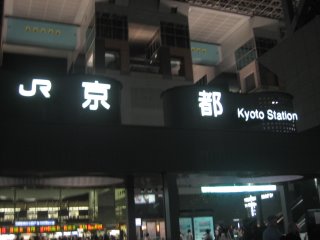
Osaka Aquarium, also known as Kaiyukan, is probably Japan's best aquarium. It introduces various forms of life inhabiting the Pacific Rim in a well organized and impressive way.
Marine life is displayed in 15 tanks, each representing a specific region of the Pacific Rim. The central tank, representing the Pacific Ocean, is nine meters deep and home to a whale shark, the aquarium's main attraction.
Visitors start their tour of the aquarium on the 8th floor and slowly spiral down floor by floor around the central tank. Some of the tanks stretch over several floors, making it possible to observe the animals from different depths and perspectives.
Osaka Aquarium is located in the Tempozan Harbor Village of Osaka's Port area.

These are Japan's Giant Sea Crabs - FREAKY!











The Ferris Wheel - It measures 112.5 meters (369 feet) from the ground to its apex, and the wheel has a diameter of 100 meters (328 feet) It's got 60 cabins that seat eight people each, with two of them designed to accommodate wheelchairs. One revolution takes about 15 minutes. Another big attraction of the huge wheel is the way it's lit up at night. The patterns were created by an internationally famous illumination designer, Motoko Ishii, and can be seen until 10 o'clock every night. One of the patterns, which change every hour, resembles a fireworks display. The illumination is not just pretty; it's also quite useful, showing temperatures and the weather forecast for the following day. It's possible to see as far away as the Kansai International Airport and even the Akashi Ohashi Bridge from the Ferris wheel on a clear day.


















 Below the terrace, you can taste the spring water, which gives the temple its name and which is said to have healing power.
Below the terrace, you can taste the spring water, which gives the temple its name and which is said to have healing power.





 Part of the fun of visiting Kiyomizudera is the approach to the temple along the steep and busy lanes of the atmospheric Higashiyama district. Except early in the morning, do not expect a tranquil, spiritual atmosphere.
Part of the fun of visiting Kiyomizudera is the approach to the temple along the steep and busy lanes of the atmospheric Higashiyama district. Except early in the morning, do not expect a tranquil, spiritual atmosphere.








































